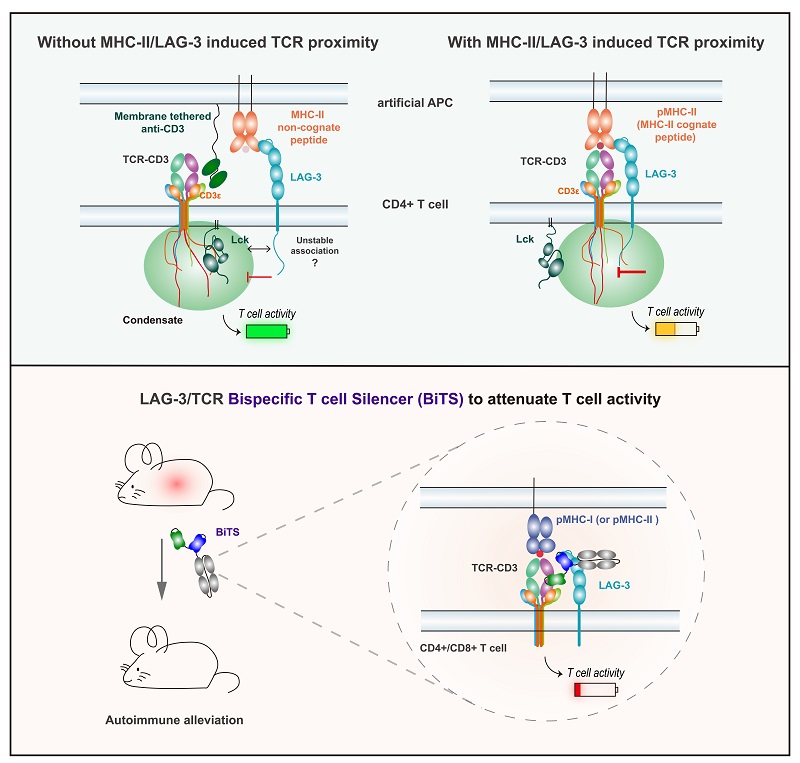Immune checkpoint pathways regulate T cell function and play pivotal roles in the treatment of both cancer and autoimmune diseases. One key component of these pathways is Lymphocyte Activation Gene 3 (LAG-3)-a classical immunosuppressive receptor that has long posed unresolved questions regarding its biological mechanisms.
In a new study published on June 30 in Cell, researchers from the Institute of Biophysics of the Chinese Academy of Sciences, the Grossman School of Medicine at New York University, and the School of Medicine at Zhejiang University have systematically demonstrated that LAG-3 inhibits T cell activity by positioning itself in close proximity to the T cell receptor (TCR) complex, rather than by simply binding to a ligand.
This study is the first to systematically reveal the conditional activation mechanism of the inhibitory receptor LAG-3, which is regulated by its classical ligand, Major Histocompatibility Complex class II (MHC-II). Instead of functioning through simple ligand binding, LAG-3 depends on MHC-II-mediated spatial proximity to the T cell receptor (TCR), enabling cis co-localization with the TCR complex and subsequent phase separation, thereby effectively suppressing CD4+ T cells.
This discovery challenges the traditional understanding of immune checkpoint activation mechanisms, particularly that of LAG-3. The strong dependence of LAG-3 on spatial and contextual activation suggests that it is not easily triggered in vivo. However, this very feature presents a unique opportunity for the precise modulation of autoreactive T cells in autoimmune diseases.
Based on this mechanism, the researchers developed an innovative bispecific T cell silencer (BiTS) antibody that simultaneously targets LAG-3 and TCR. This antibody selectively regulates pathogenic T cells expressing LAG-3 and shows significant therapeutic efficacy in multiple autoimmune disease animal models.
The study introduces the concept of "cis-proximity-dependent immune checkpoint," highlighting that LAG-3 does not function as a conventional receptor reliant solely on ligand engagement. Instead, its activity is tightly controlled by its spatial proximity to the TCR within the immune synapse.
This conditional mechanism helps explain the limited efficacy of LAG-3 monotherapies in cancer treatment, while also providing a rationale for its potential use in treating autoimmune diseases.
The researchers further propose a novel therapeutic strategy of "cis-inhibitory bispecific antibodies" for autoimmune treatment. This strategy has great potential to drive the development of next-generation precision immunotherapies that target pathogenic T cells, opening new avenues in autoimmune disease intervention.

LAG-3 exerts its inhibitory function by undergoing phase separation with the CD3ε subunit of the TCR/CD3 complex; Enhancing the cis-proximity between LAG-3 and TCR through a LAG-3/TCR bispecific antibody facilitates the treatment of autoimmune diseases. (Image by LOU Jizhong's group)






